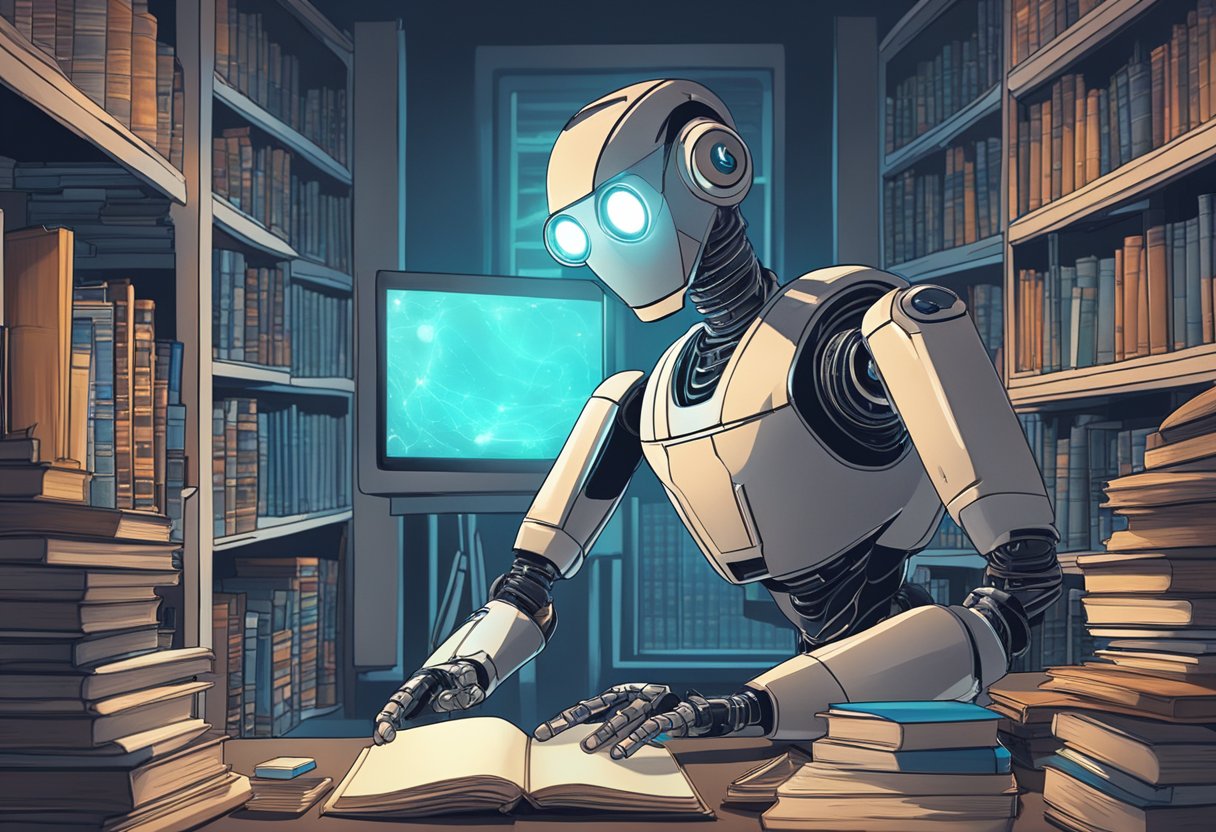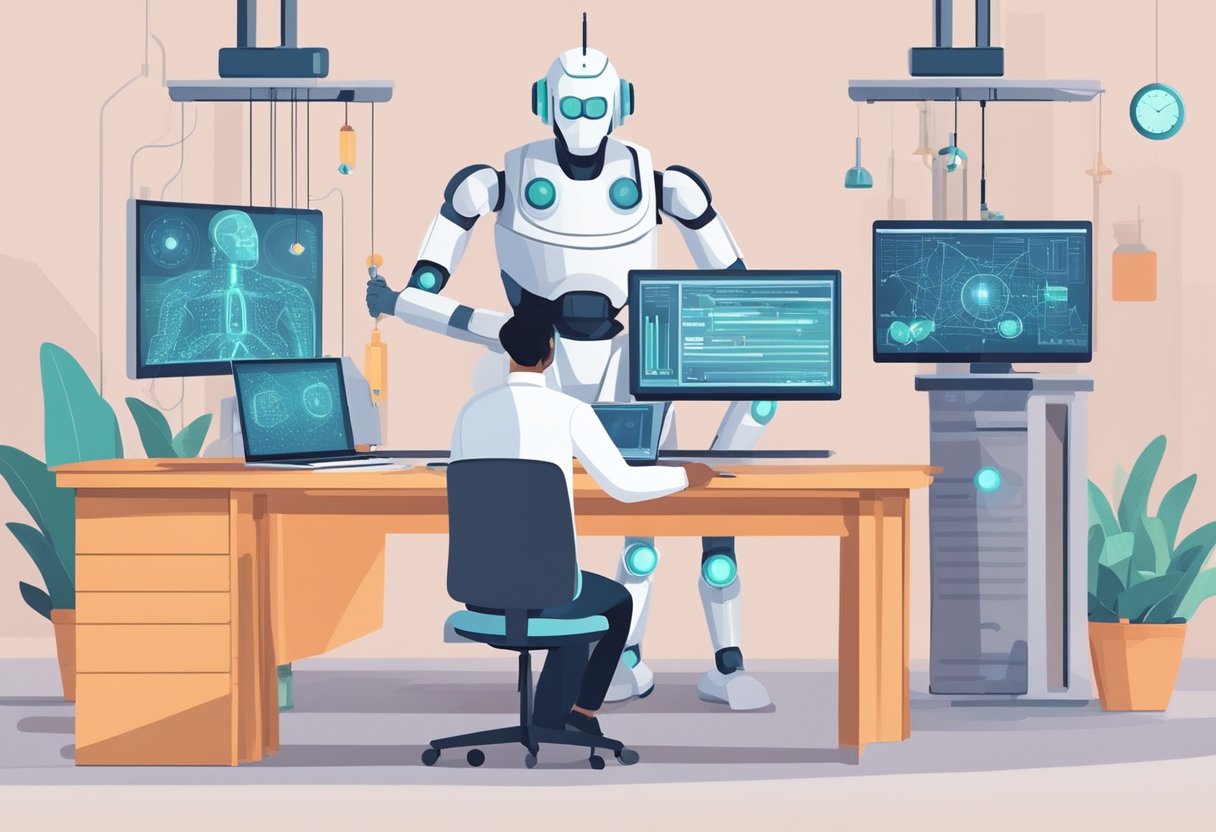In the realm of technological innovation, artificial intelligence (AI) stands out as a field ripe with promise and potential. Yet, it’s also subject to widespread misconceptions that cloud the public’s understanding of what AI truly is and what it can do. From sensationalized media portrayals to science fiction narratives, AI has been depicted in a way that often blurs the line between reality and fantasy. This misrepresentation leads to a gap in knowledge that necessitates a clear distinction between the myths surrounding AI and its actual capabilities.
Realistic expectations about AI’s role in business and employment are crucial for adapting to its integration in various industries. It is important to recognize both the opportunities AI presents and the challenges it poses. This understanding is also fundamental in addressing the ethical implications and ensuring human oversight as AI systems become more prevalent. As AI technology continues to evolve, separating fact from fiction is key to leveraging its benefits while staying grounded in reality.
Key Takeaways
- AI is often misunderstood due to unrealistic portrayals in media and fiction.
- Recognizing AI’s true impact on industries is vital for its integration.
- Ethical considerations and the need for human oversight are paramount as AI advances.
Understanding AI: Dispelling Common Myths
Artificial Intelligence (AI) has often been shrouded in a mist of exaggerated tales and misconceptions. In the quest to set the record straight, let’s dive into what AI really is, bust some common myths, and clarify the confusion around AI sentience.
Defining Artificial Intelligence
AI is essentially about creating systems that can perform tasks that typically require human intelligence. This includes things like problem-solving, recognizing speech, and learning from experience. Despite popular belief, AI doesn’t equate to robots with human-like awareness — it’s a branch of technology focused on smart algorithms.
AI Myths and Reality
Countless myths cloud people’s understanding of AI, often blurring the lines between science fiction and actual capabilities. For instance, the idea that AI can spontaneously develop desires or goals is a myth. In reality, AI operates within the confines of its programming and the data it’s fed. Debunking widespread misconceptions is essential for an accurate perception of AI in society.
The Sentience Confusion
Sentience — the capacity to feel, perceive, or experience subjectively — is a trait reserved for living beings. While AI can mimic certain aspects of human behavior, there’s a significant gap between mimicry and actual consciousness. The misunderstanding often arises from AI’s ability to adapt and respond in ways that seem intelligent, but this isn’t indicative of true sentience or self-awareness.
AI in Business and Employment
Artificial Intelligence (AI) is transforming the landscape of business and the nature of employment. Companies are integrating AI into operations for enhanced efficiency, while grappling with its implications on the workforce.
Impact on Jobs and Job Displacement
The advent of AI in the workforce has sparked a significant debate regarding job displacement. While AI can handle repetitive tasks with greater speed and accuracy, freeing employees to engage in more complex work, concerns about machines replacing human jobs persist. For example, automation software on platforms like LinkedIn has streamlined the recruitment process, but has also changed the roles of HR professionals, emphasizing adaptability and digital skills.
- Prospects
- Enhanced productivity: AI can process and analyze data faster than humans.
- Job creation: New tech jobs appear for AI maintenance and development.
- Concerns
- Skill redundancy: Some traditional jobs may become obsolete.
- Training needs: Workforce must adapt or upskill to stay relevant.
Decision-Making and Biases in AI
AI’s influence on decision-making in business cannot be overstated, with algorithms capable of gleaning insights from vast datasets that are beyond human capacity to analyze. Despite this, AI systems can inherit biases from their human creators or the data they’re fed, potentially leading to biased hiring processes or customer profiling. Efforts to ensure that AI algorithms are constructed and trained fairly are crucial in mitigating these biases.
- Measures to Combat Bias
- Inclusive training data: Diverse datasets can help reduce AI bias.
- Transparency: Clear understanding of how AI makes decisions.
- Benefits of AI-Enhanced Decisions
- Consistency: AI can deliver consistent outcomes.
- Predictive insights: AI tools can forecast trends and optimize strategies.
Businesses continue to embrace AI for its potential to elevate efficiency and strategic insight, while also recognizing the need to manage its impact on employment and address inherent biases in technology.
The Future of AI: Expectations vs Reality
In exploring the future of AI, it’s crucial to differentiate between the often sensational predictions and the tangible advancements. This includes understanding the scope and boundaries of General AI versus the more focused Narrow AI.
Predictions and Speculations
Predictions about AI are a dime a dozen, with experts and laypeople alike offering a plethora of forecasts. Some envision a world where AI seamlessly integrates into daily life, enhancing everything from healthcare to transportation. Others predict a more ominous future, with job displacement and challenging ethical considerations.
- Reality Check: Most AI today is Narrow AI, skilled at specific tasks but nowhere near the fictionalized version of self-aware robots.
- Expectation Gap: While AI is advancing rapidly, the true future of AI rests not in revolutionizing our world overnight but in incremental progress and integration.
Artificial General Intelligence and its Limitations
Artificial General Intelligence (AGI), AI with human-like cognitive abilities, remains a speculative frontier. It’s the holy grail of AI research but faces significant hurdles:
- Complexity: Achieving AGI isn’t just about raw computing power; it requires nuanced understanding, which AI today lacks.
- Ethical and Safety Concerns: As AI systems become more advanced, ensuring they align with human values is paramount but challenging.
In sum, the future of AI should be grounded in reality, recognizing the accomplishments and promise of Narrow AI, while acknowledging that the leap to AGI involves hurdles that are currently insurmountable.
Ethical Considerations and Human Oversight
In the rapidly evolving landscape of artificial intelligence, ethical considerations and human oversight are paramount. They ensure AI systems function within the boundaries of societal norms and legal regulations, particularly in sensitive sectors like healthcare.
The Role of AI Ethics
AI ethics encompasses a broad range of moral principles and values that guide the development and application of artificial intelligence. It addresses questions such as how AI should behave, what principles should govern its decision-making, and the potential impacts it may have on society. In healthcare, for example, AI ethics takes center stage when developing algorithms that could influence patient treatment plans. A commitment to principles such as non-maleficence, beneficence, and justice is crucial to maintain trust and the well-being of patients.
The Importance of Human Oversight in AI Systems
Human oversight serves as a critical checkpoint to prevent unintended consequences of AI systems and to enhance their accountability. Whether it’s a simple software update or the implementation of AI in diagnostic procedures, human intervention is vital. Human supervisors not only help in interpreting AI-generated advice in healthcare, ensuring it aligns with clinical expertise but also provide a safety net to catch any errors before they affect patient care. This level of scrutiny is essential as it reflects a collective responsibility towards both individual welfare and societal standards.




